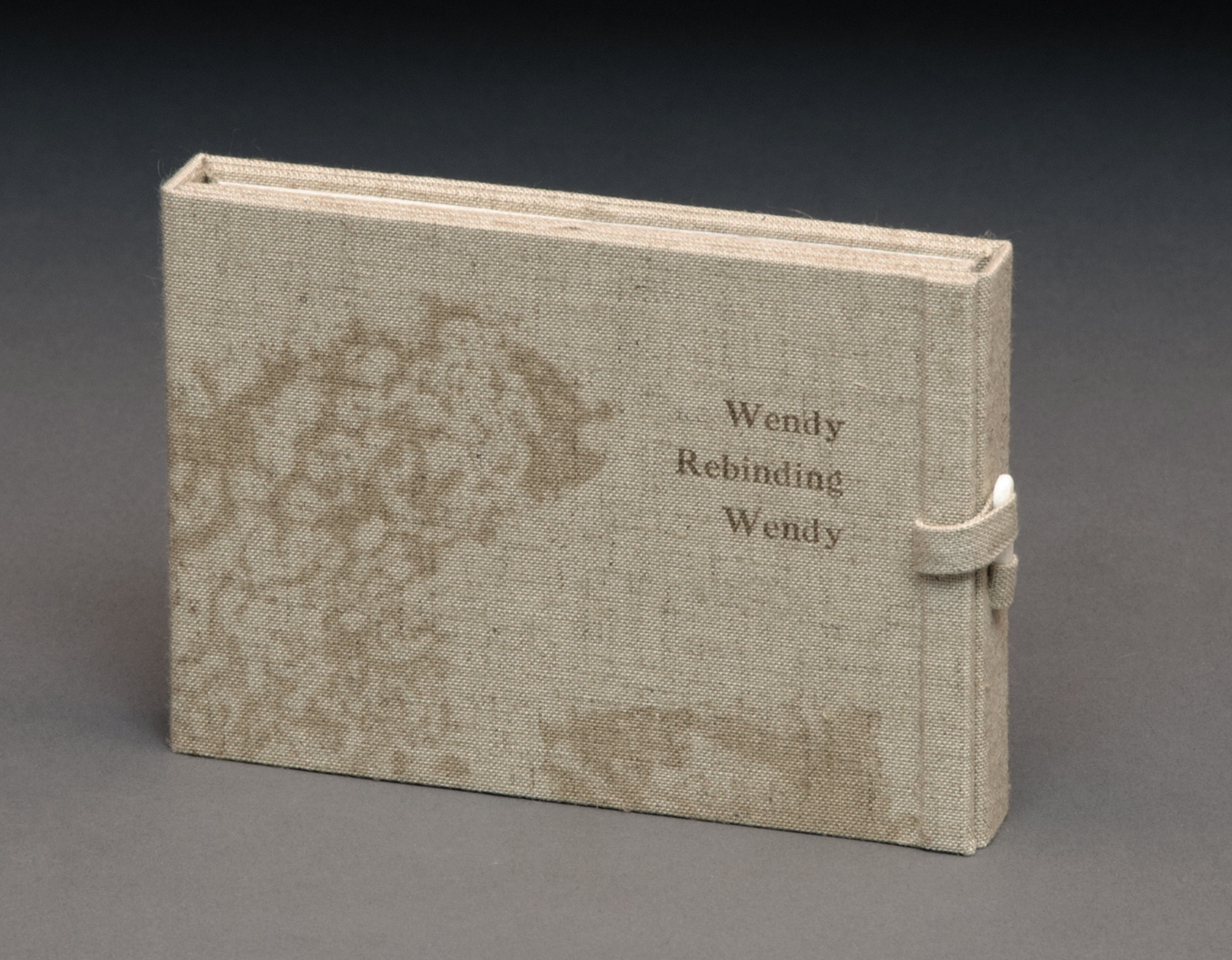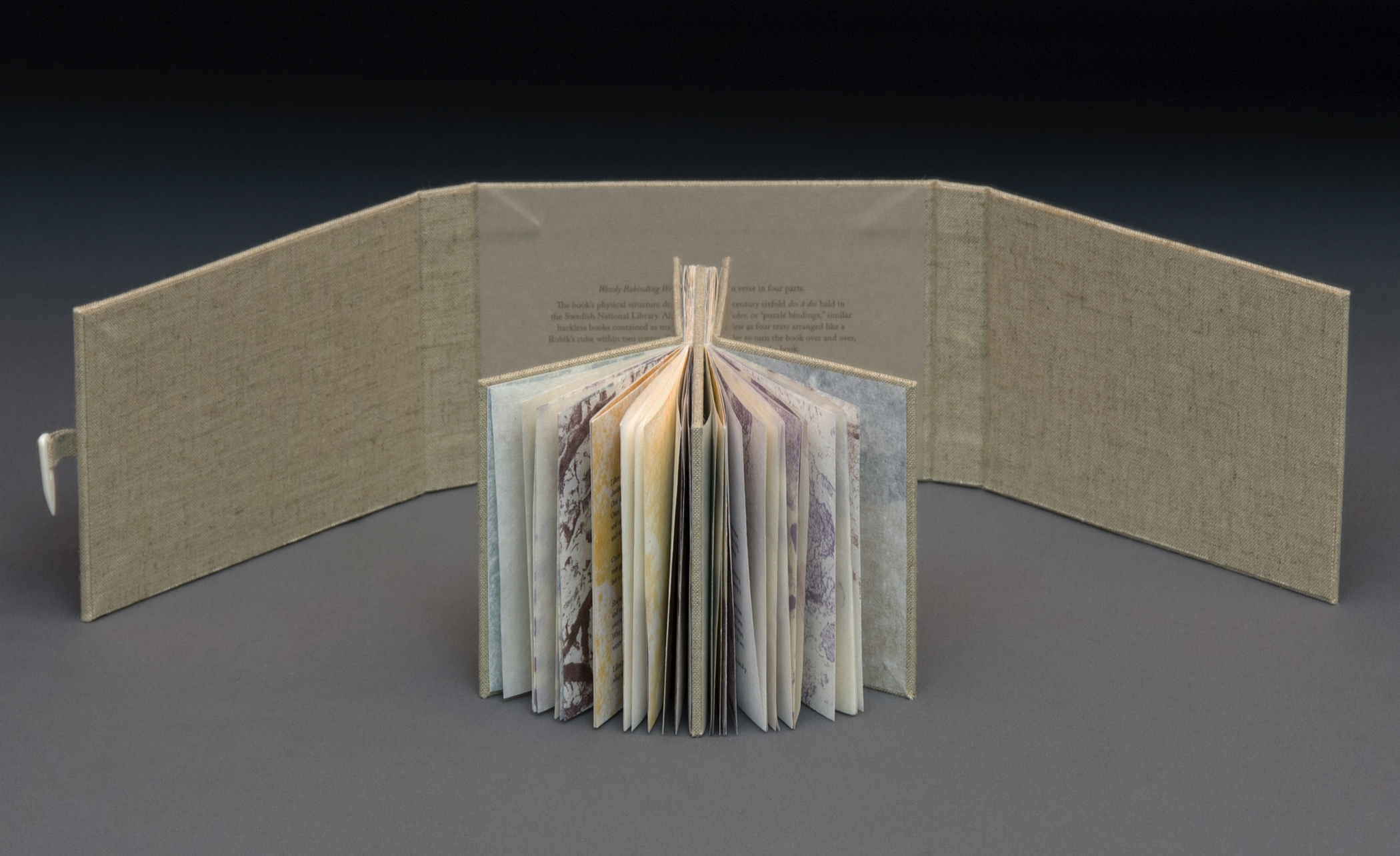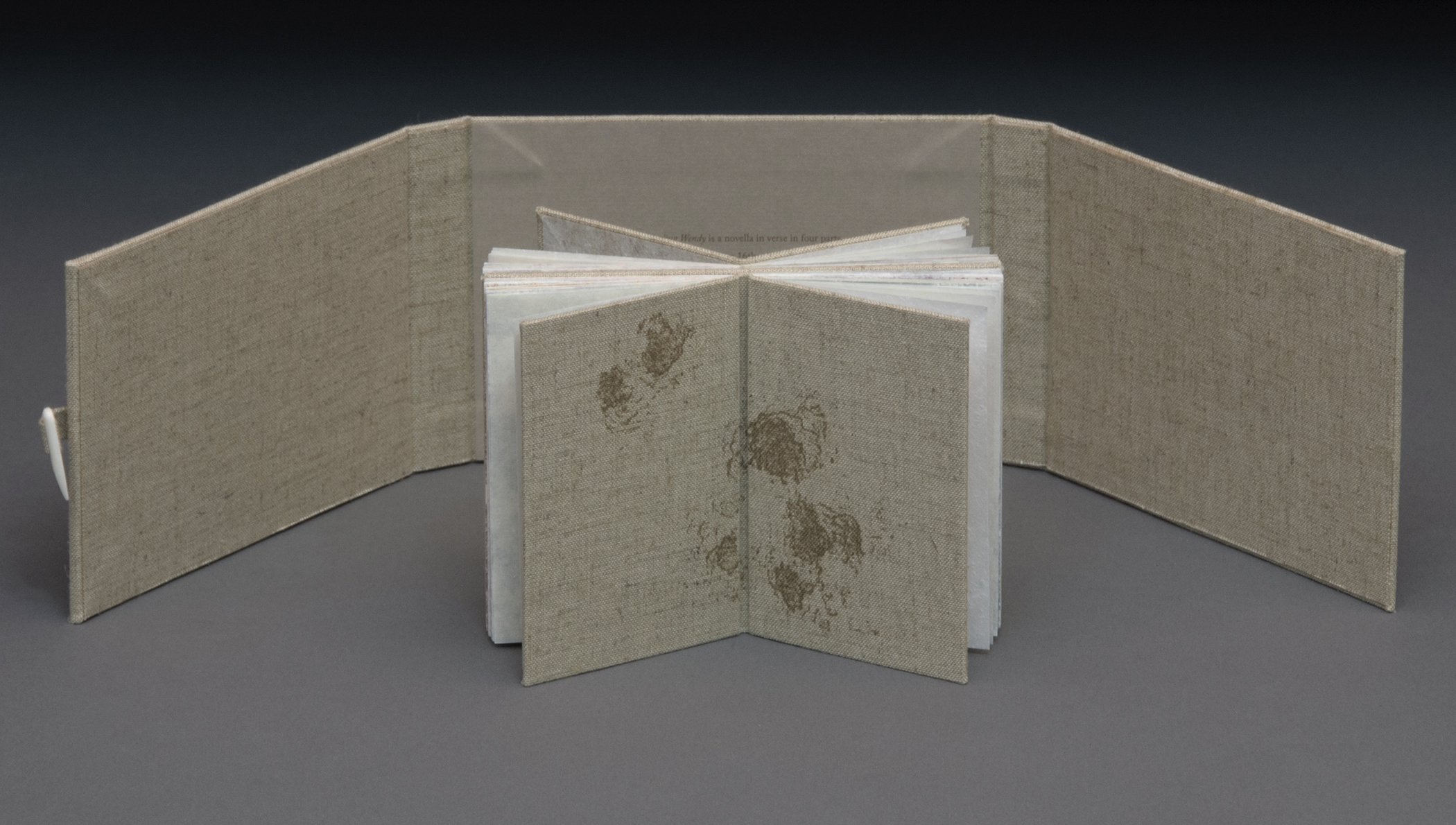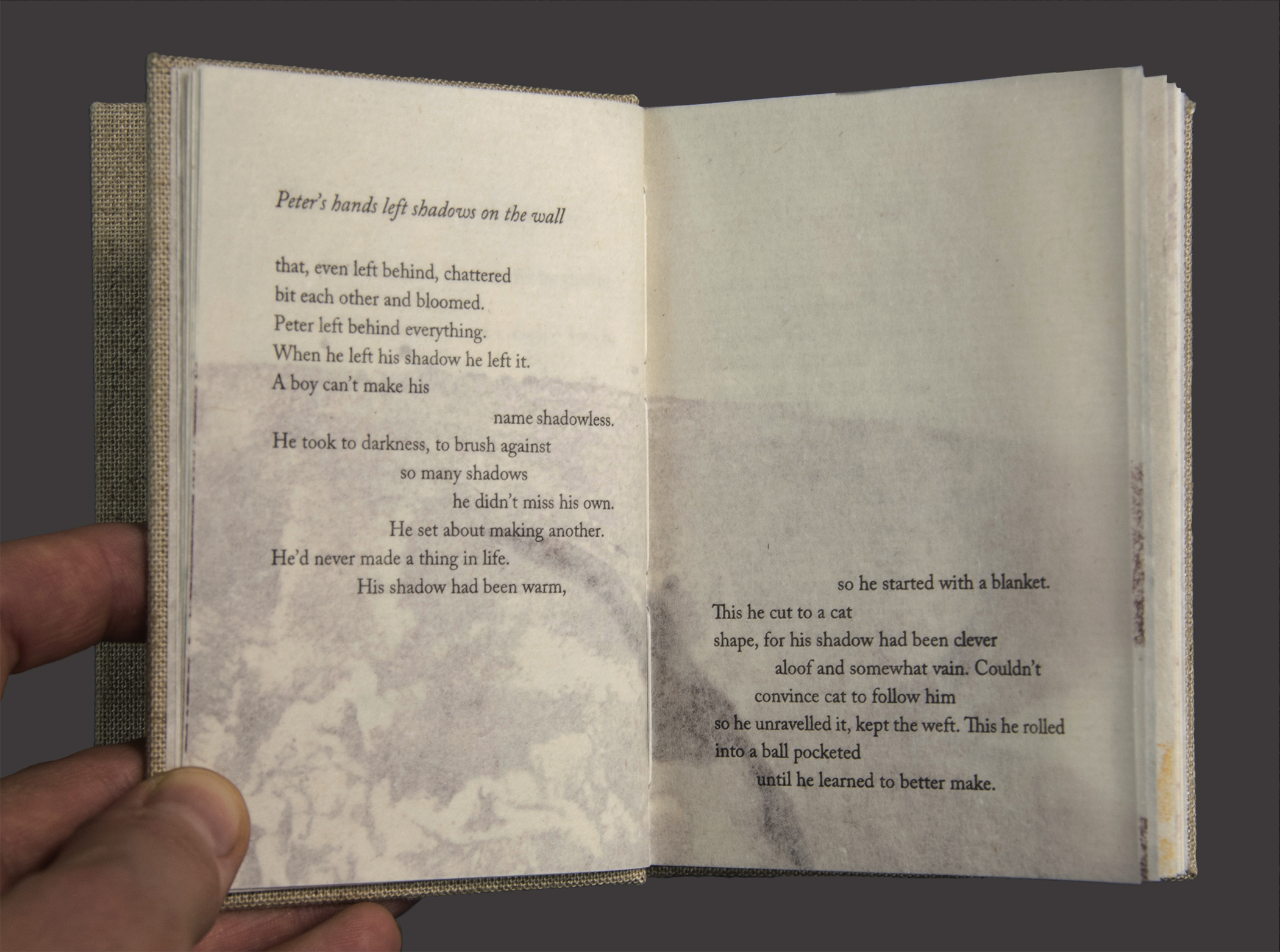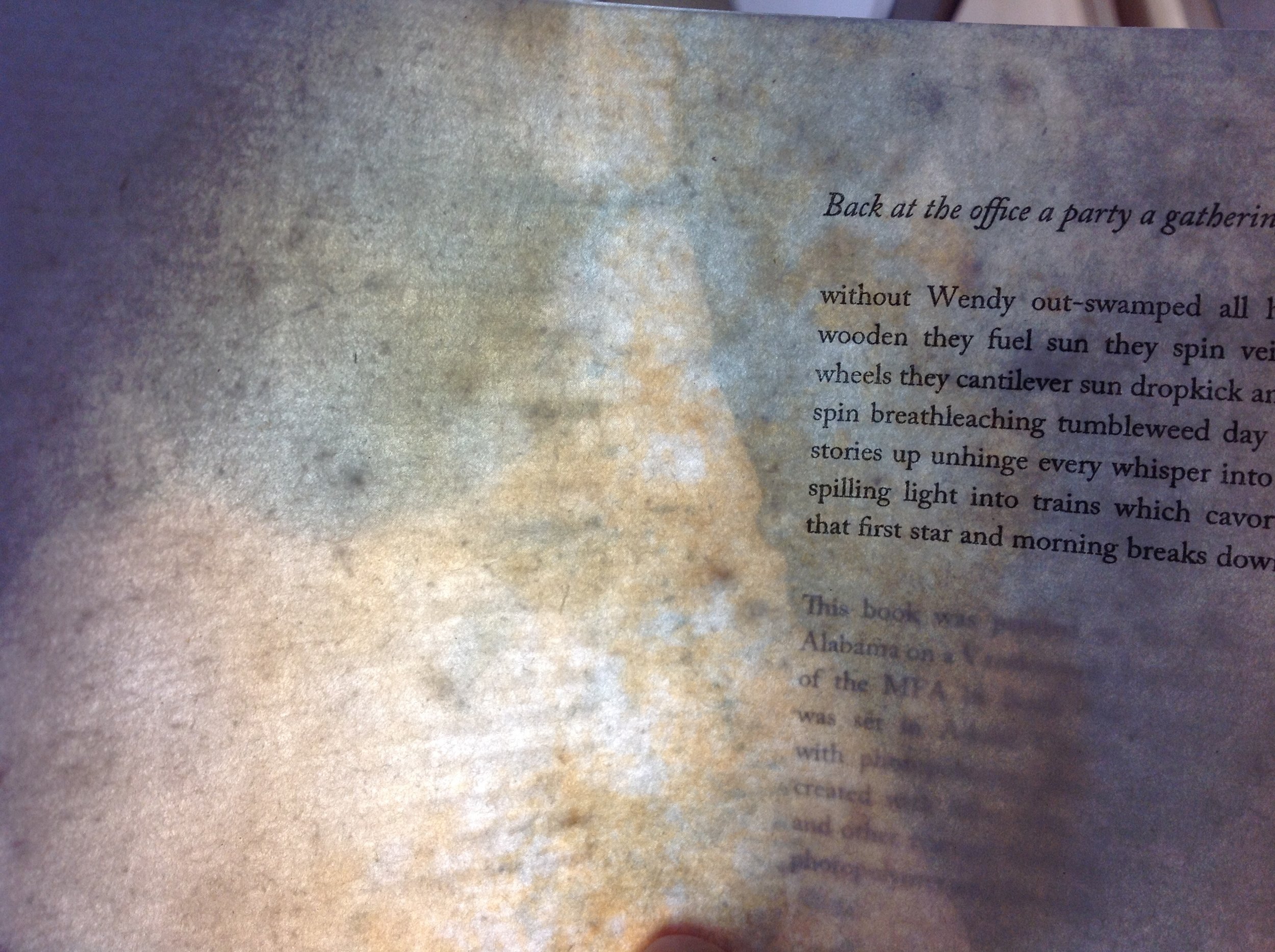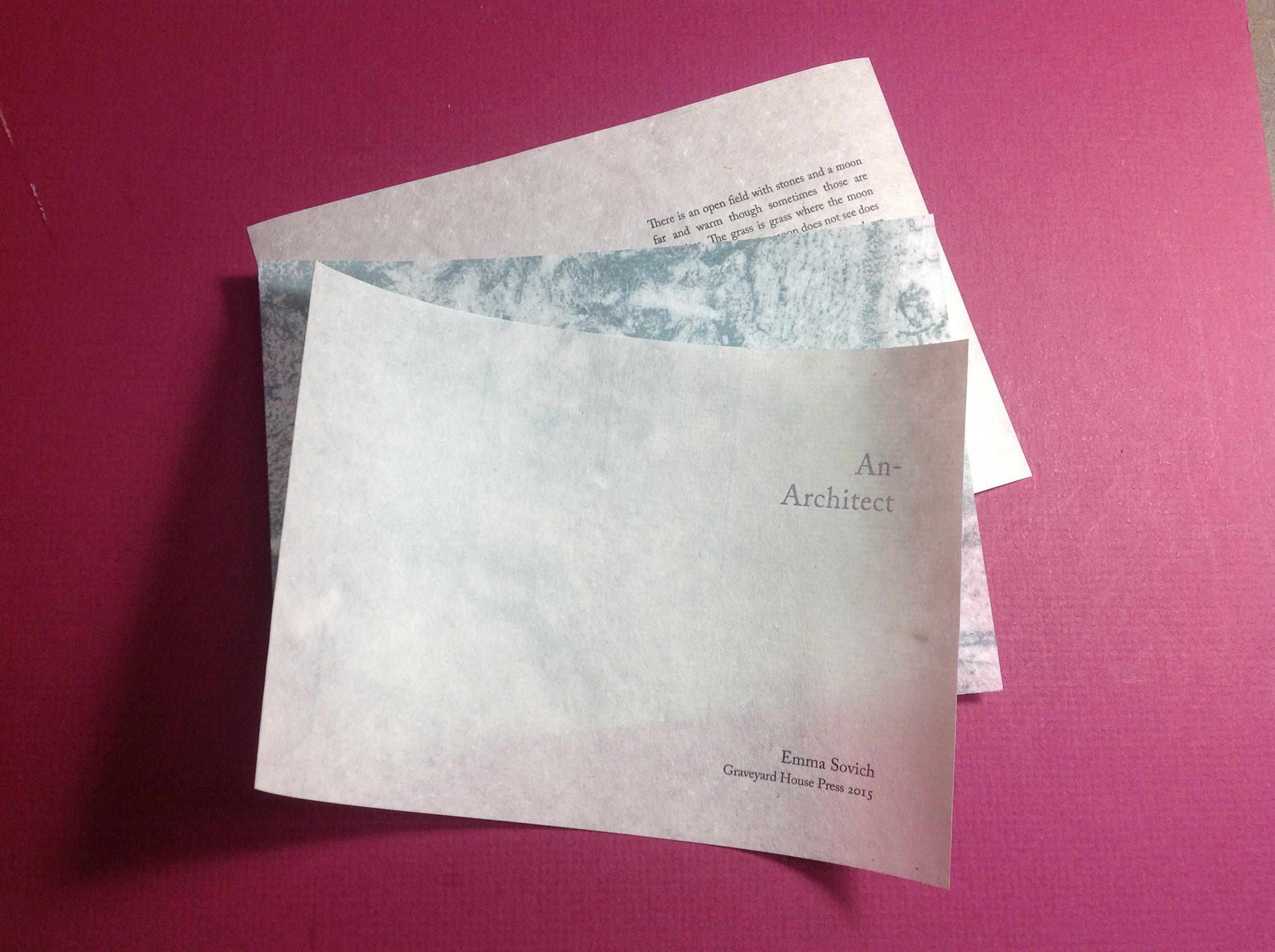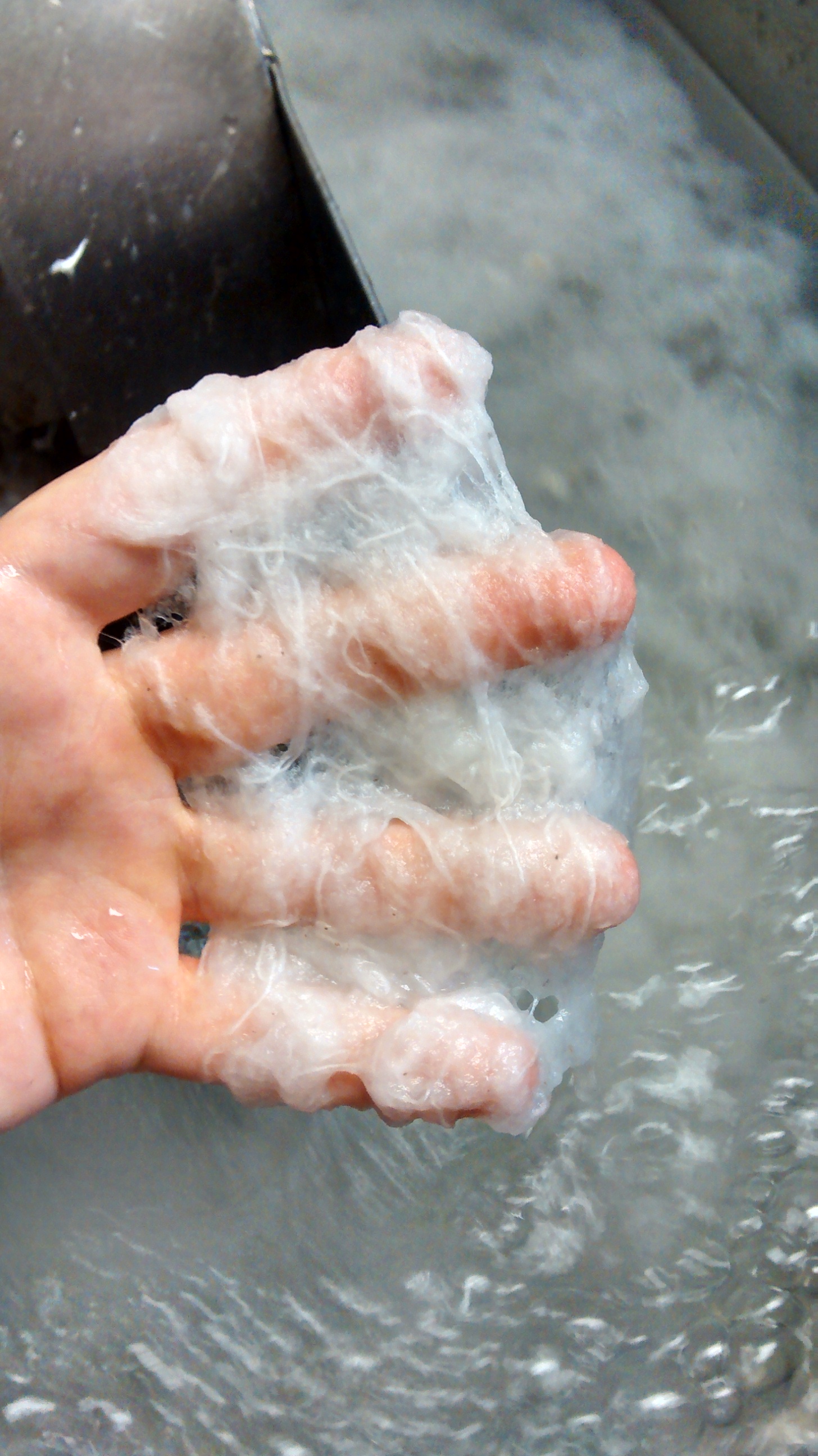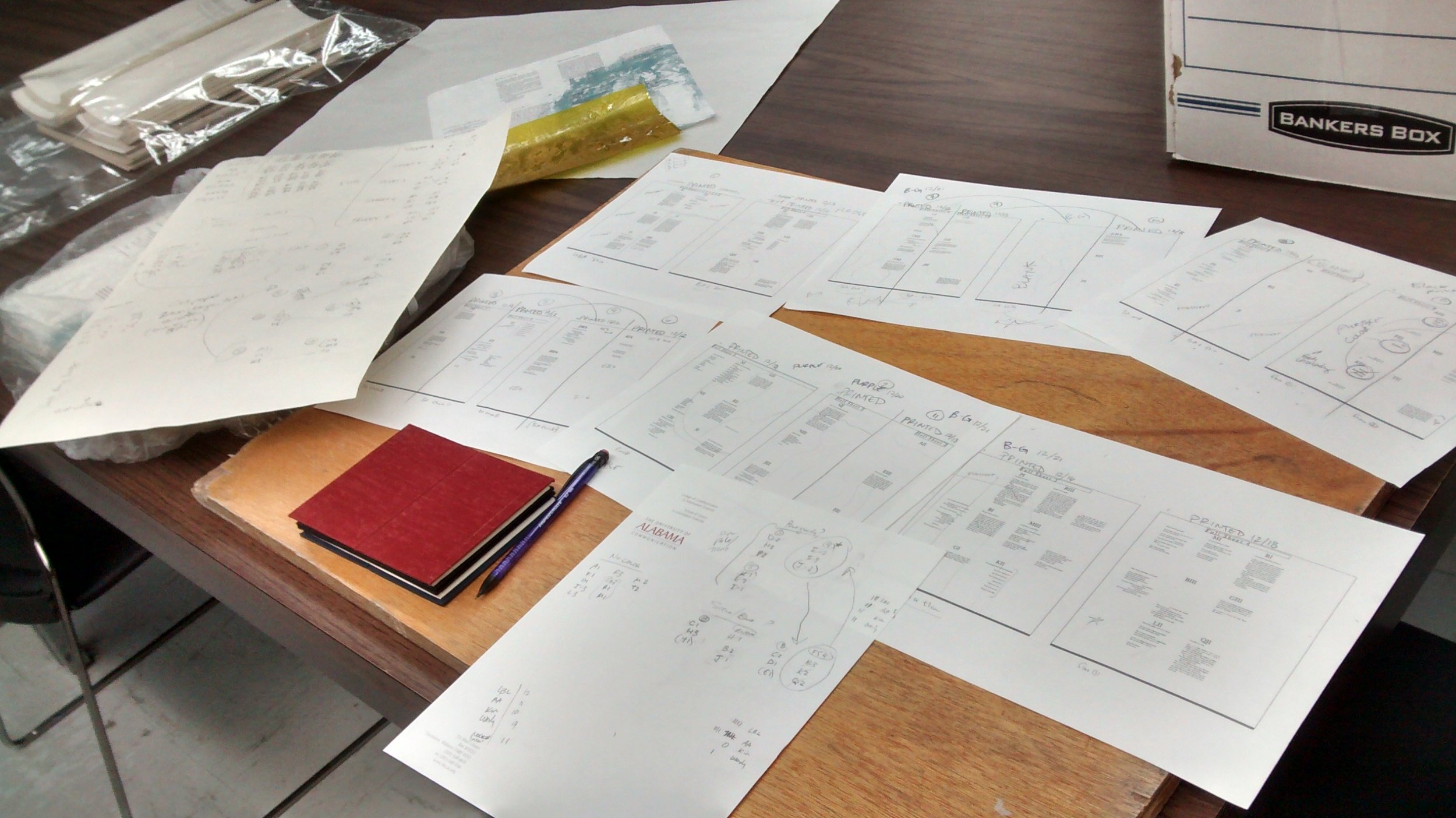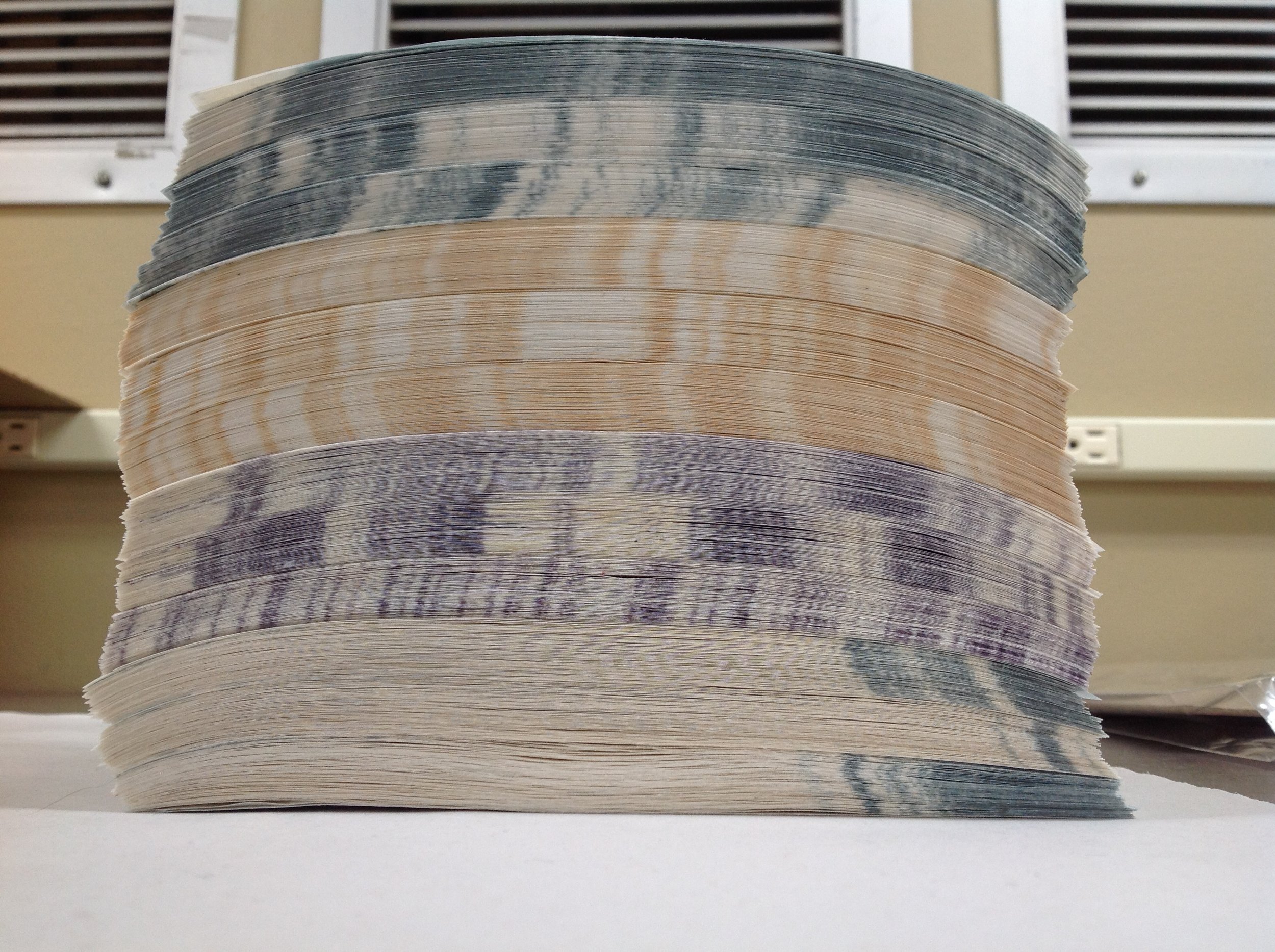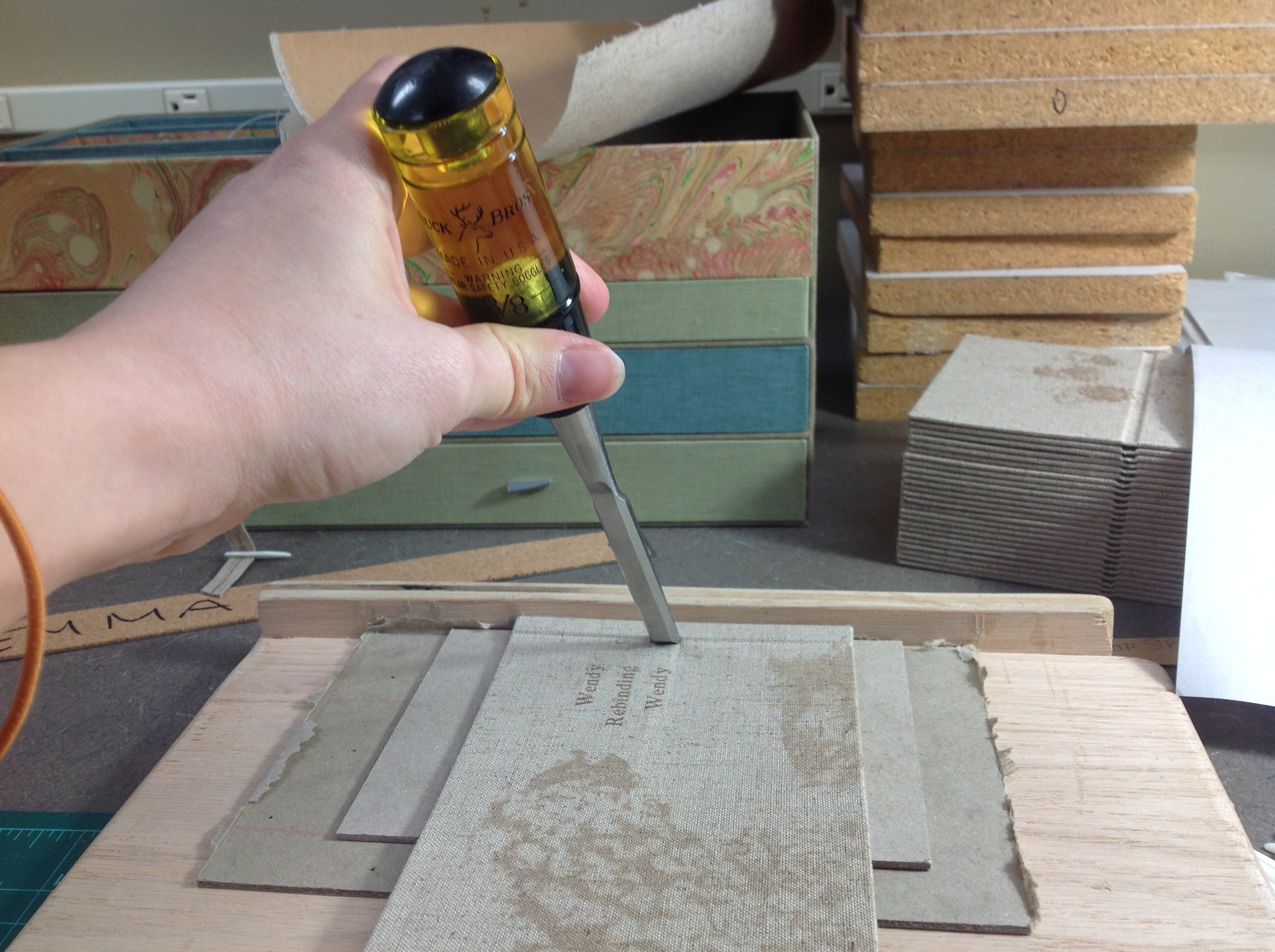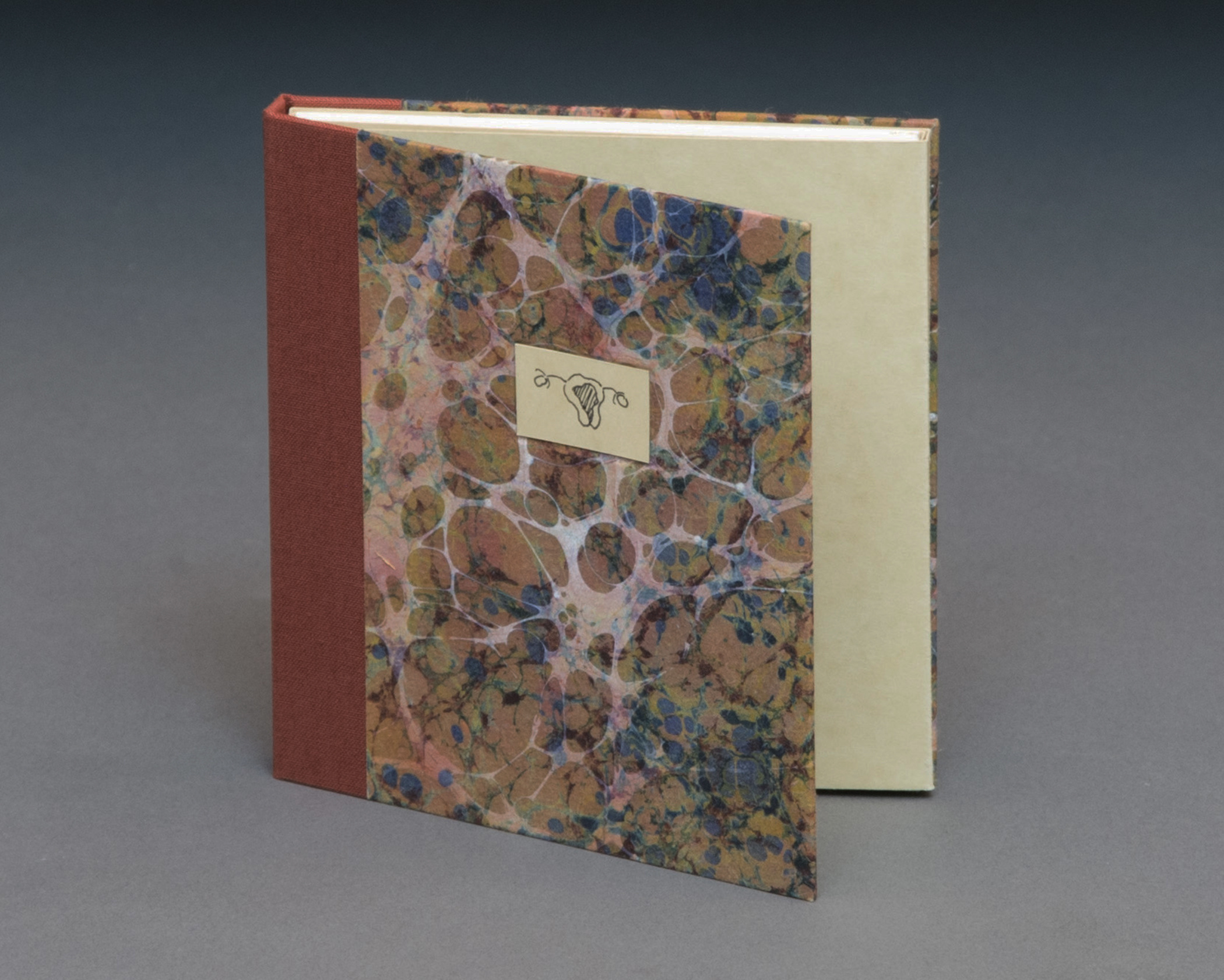A collaboration between an architect and a bookbinder. These three miniature books possess bindings and materials that recall typologies of construction.
Randy Sovich (my architect father) and I were driven to explore the relationships between our crafts. Joinery defines three typologies of construction: tent, cave, and hut. These relate to cultures around the world; each have binding structures that relate back to the three—as well as the fable “The Three Little Pigs,” so we created miniature books for each structure.
Tent adapts traditional Japanese 4-hole binding; the tackets and sewing recall the construction of a tent or yurt.
Cave adapts an Ethiopian binding; the cover’s leather shaped over cord recalls the rock-hewn churches of Lalibela in Ethiopia.
Hut adapts a Western-style 2-hole link stitch; the stitching over parchment tapes and the basketweave cover recall post-and-beam and woven panel construction of huts.
The spines of each are displayed in a box, whose burnt finish represents the outside world’s dangers. In the process, we discovered that “a law of geometry and a law of poetry” connect our crafts.
Collaborator Bio: Randy M. Sovich, AIA, founder of RMSovich Architecture, graduated from Carnegie-Mellon University, and has practiced architecture for 35 years. His extensive experience designing buildings and places has been recognized for quality in international competitions and through awards programs locally, regionally and nationally. Mr. Sovich is co-founder and co-Editor of T3XTURE Archizine.
Note: We consulted a chapter in Victor Hugo's Notre-Dame de Paris titled “This Will Kill That,” in which he defines connections and tensions between architecture and the book (which had been predicted to "kill" architecture). We also consulted Joseph Rykwert’s On Adam’s House in Paradise, and 18th and 19th C architectural theorists such as Abbé Laugier, Viollet-le-Duc, and Durand.
Materials:
Tent - handmade kozo, 10 lb hemp thread
Cave - quarter-sawn oak, goat leather, hemp cord, 10 lb hemp thread
Hut - goat parchment, basswood, 10 lb hemp thread
Box - Shou-Sugi-Ban finished mahogany, aluminum pins
All contain handmade paper of raw cotton, flax, and and abaca
Dimensions: 5 x 5 x 2.25 inches closed.
2017
Edition size: 3















